Visual note taking has traditionally involved drawing notes during meetings. The Graphic Recording Method is commonly used in corporate environments as well as large conferences to record meetings and seminars.
Scrintal's approach differs from this more widely known method because Scrintal uses note taking (with words and images, etc.) and mindmapping or concept mapping to present your notes in a clear and concrete manner.
The gain here for the user is to make the structure of your notes clear and understandable, opposed to how traditional note-taking is done. Traditional note-taking is linear, non-connected and every note stands by itself. This way of taking notes is mostly counterproductive and, if not processed close to when the note was taken, is more or less useless in the learning process.
Why do Visual Learners prefer Visual Note Taking?
Visual learners prefer to learn through images and graphics. Visual learners are great at visual presentations and learning through pictures. Visual learners have the following strengths which leads them to take their notes in a visual way, instead of traditional note taking:
They are good at identifying patterns in images.
They can tell the differences between colors and shapes very well upon eyesight.
They are often immaculate and organized with their bookwork because they appreciate balanced imagery.
They are very good at reading maps.
3 types of Visual Note Taking
The best visual notes help you remember ideas better and make it easier for you to share them with others. They should be your own interpretation of the information you want to remember.
Mind Maps
Mind maps are diagrams used to organize information visually. Mind maps are hierarchical and show relationships between elements. They usually revolve around a single concept drawn in the center of a blank page, to which associated elements like images, words, or parts of words are added. It is helpful to draw mind maps by hand, either as "notes" during a lecture, meeting, or planning session, for example, or as more detailed images when more time is available. Mind maps are a form of spider diagrams.
Graphic Charts
Graph charts are graphics that represent tabular or numerical data. Charts are often used to visualize large amounts of data and the relationships between the data.
Flowcharts
A flowchart is a diagram that depicts a process, system, or computer algorithm. They are widely used in multiple fields to document, study, plan, improve and communicate often complex processes in clear, easy-to-understand diagrams. Flowcharts, sometimes spelled as flow charts, use rectangles, ovals, diamonds, and potentially numerous other shapes to define the type of step, along with connecting arrows to describe flow and sequence.
What makes Visual Note Taking so effective?
Seeing content presented visually helps people to connect ideas. As a visual note-taker, you use physical connections (such as arrows, lines, and paths) between related content to guide the viewer's eye around the page. These sorts of visuals are effective in brainstorming, outlining, ideating and finally in presentations.
Connected thoughts for knowledge management: Connecting thoughts is much more fun and easier in visual note taking. Separate thoughts can come together more easily when visually organized.
Network of notes: Each arrow in visual note taking can link to many other notes and form a network easily.
The overview effect: You can see all your thoughts at one glance when they are visually organized.
How does visual note-taking look in action?
Here are six easy steps to visual note taking in Scrintal.
1. Separate your ideas
To get the best out of visual note taking, you need to write each idea separately on cards or post-its. You can do this by writing one idea per card in Scrintal. Seeing your ideas scattered will allow you to take a glance at each one of them at once. This is the first step before you connect your ideas.
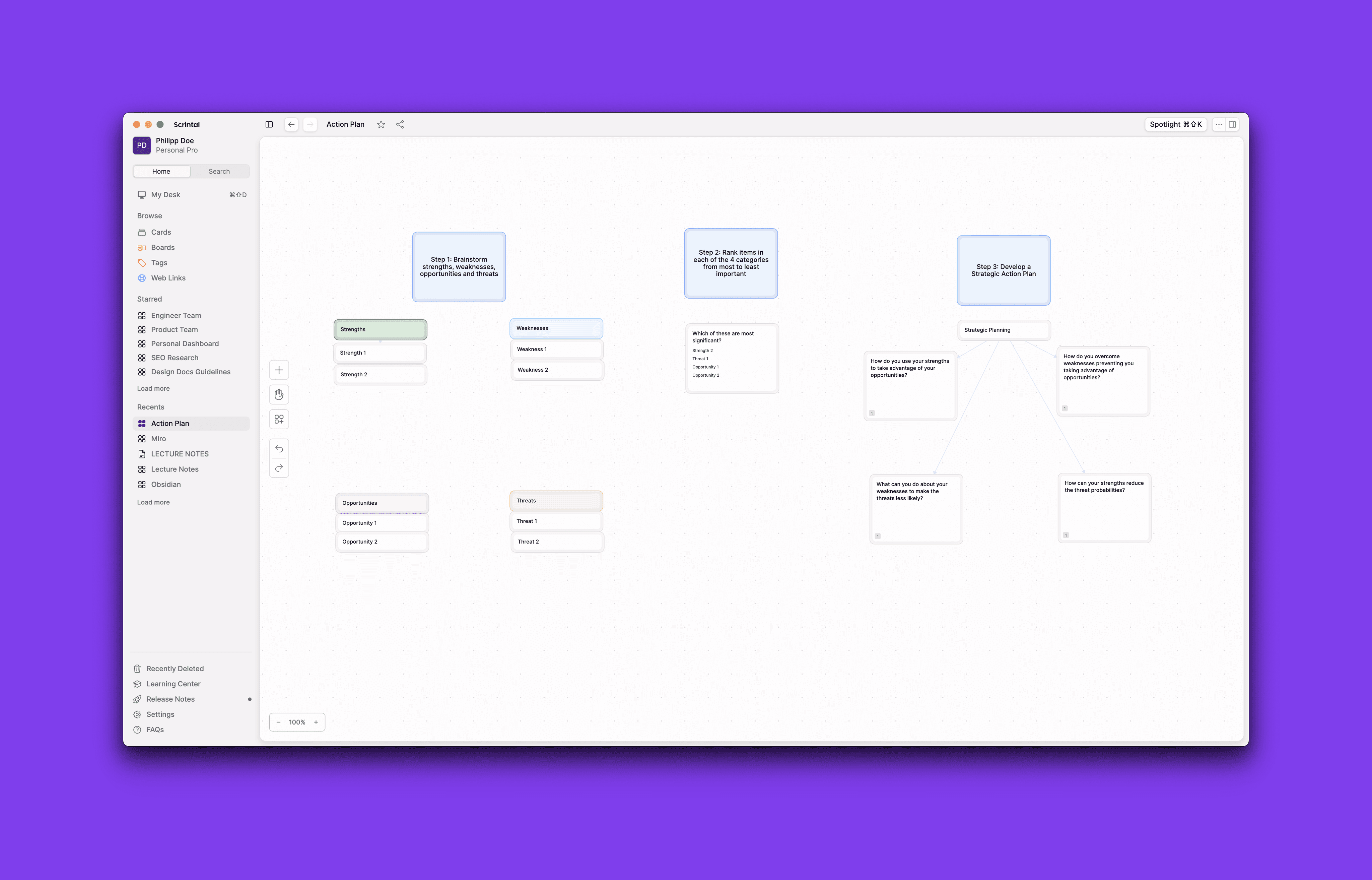
2. Add images and videos
Your ideas might be supported by images and videos that you have. These supporting materials are useful for going deeper in the ideas and developing them at later stages.
These visual cues enhance the information on your cards and make them easier to understand — especially when you're looking back at older notes. In Scrintal, you can easily add any tweet, Youtube and Vimeo link, and images to your cards. You can select images from your computer, your browser or from libraries such as Unsplash to illustrate your ideas.
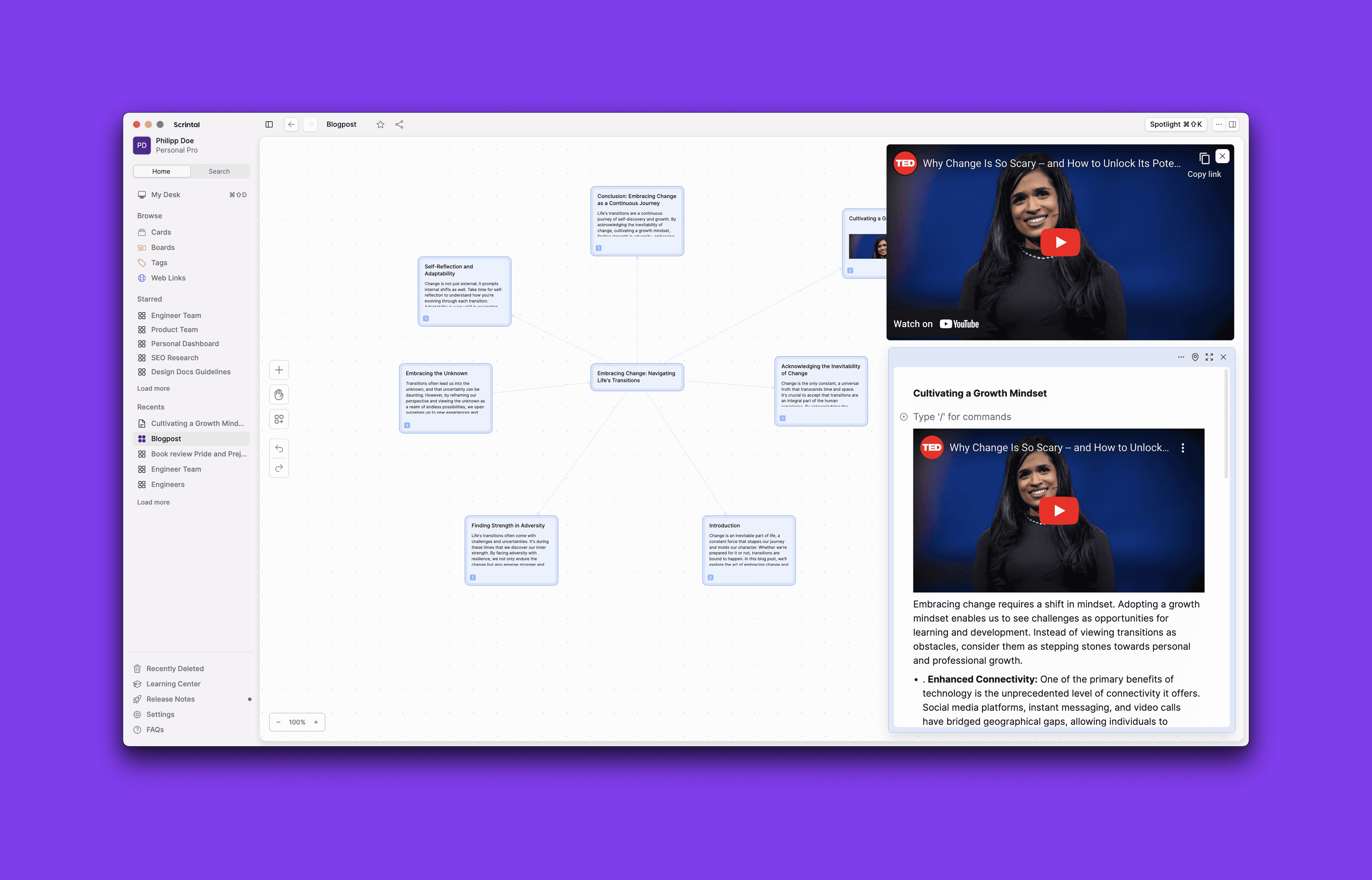
3. Support your notes with readings
Readings are especially useful for going deeper in the ideas and developing them at later stages.
You can add any PDFs to your cards in Scrintal. At this stage, you do not need to worry about organizing your cards or any material as we will do it in the next step.
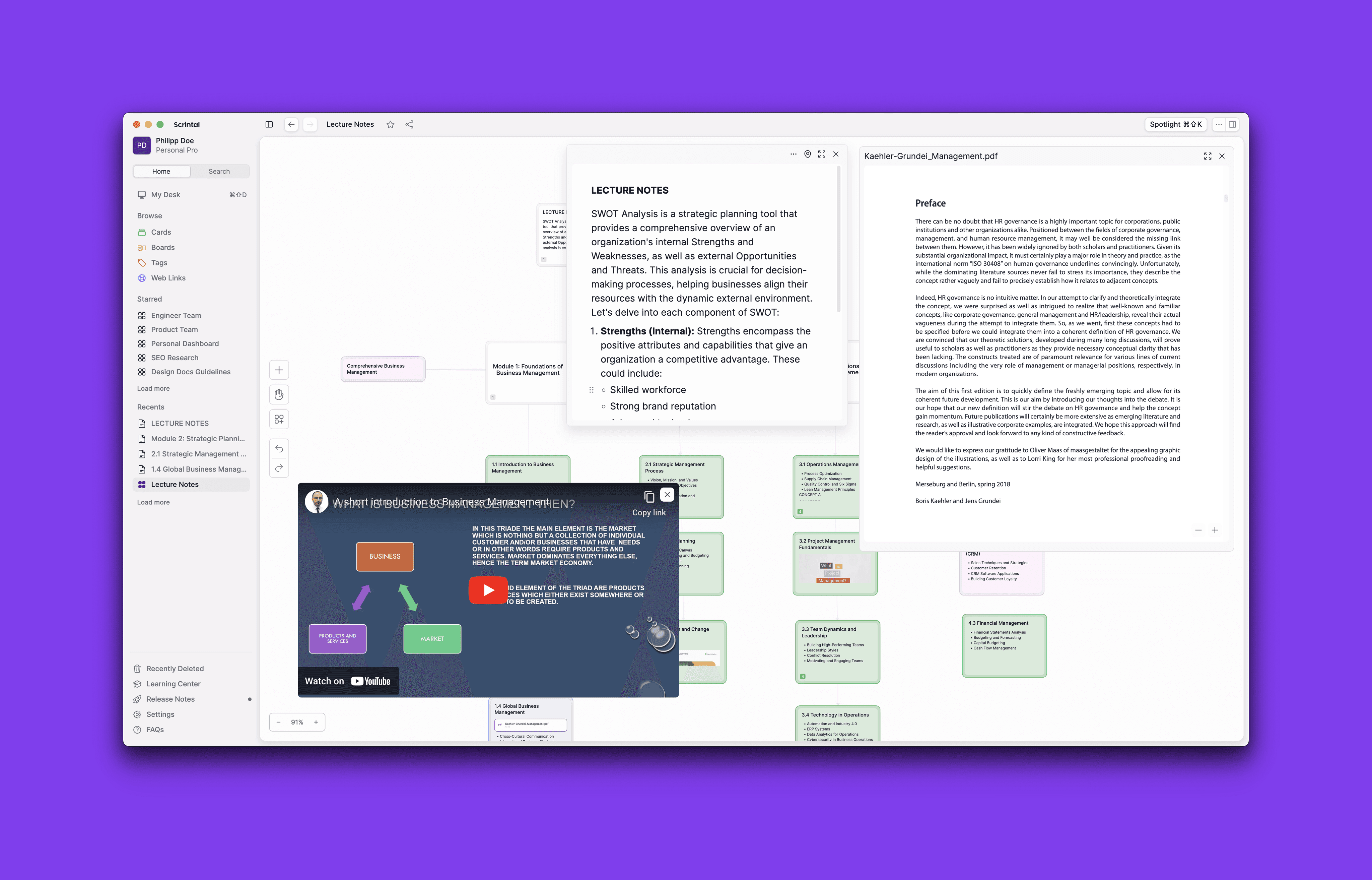
4. Write down sub-ideas
For example, let's say you're taking notes on a research paper or book chapter. You might write down the main idea of a paragraph as a single word, phrase or sentence in the middle of your page. Then, you might draw branches out from it for each sub-idea that follows.
As you read, you can add more branches to support those additional sub-ideas. As your notes grow, you can link related ideas together by drawing lines between them.
These lines indicate how cards are related to one another. They create hierarchy and groupings. This is what allows you to see the forest for the trees as you work your way through a deck of cards.
Here's how your ideas and sub ideas can look like:
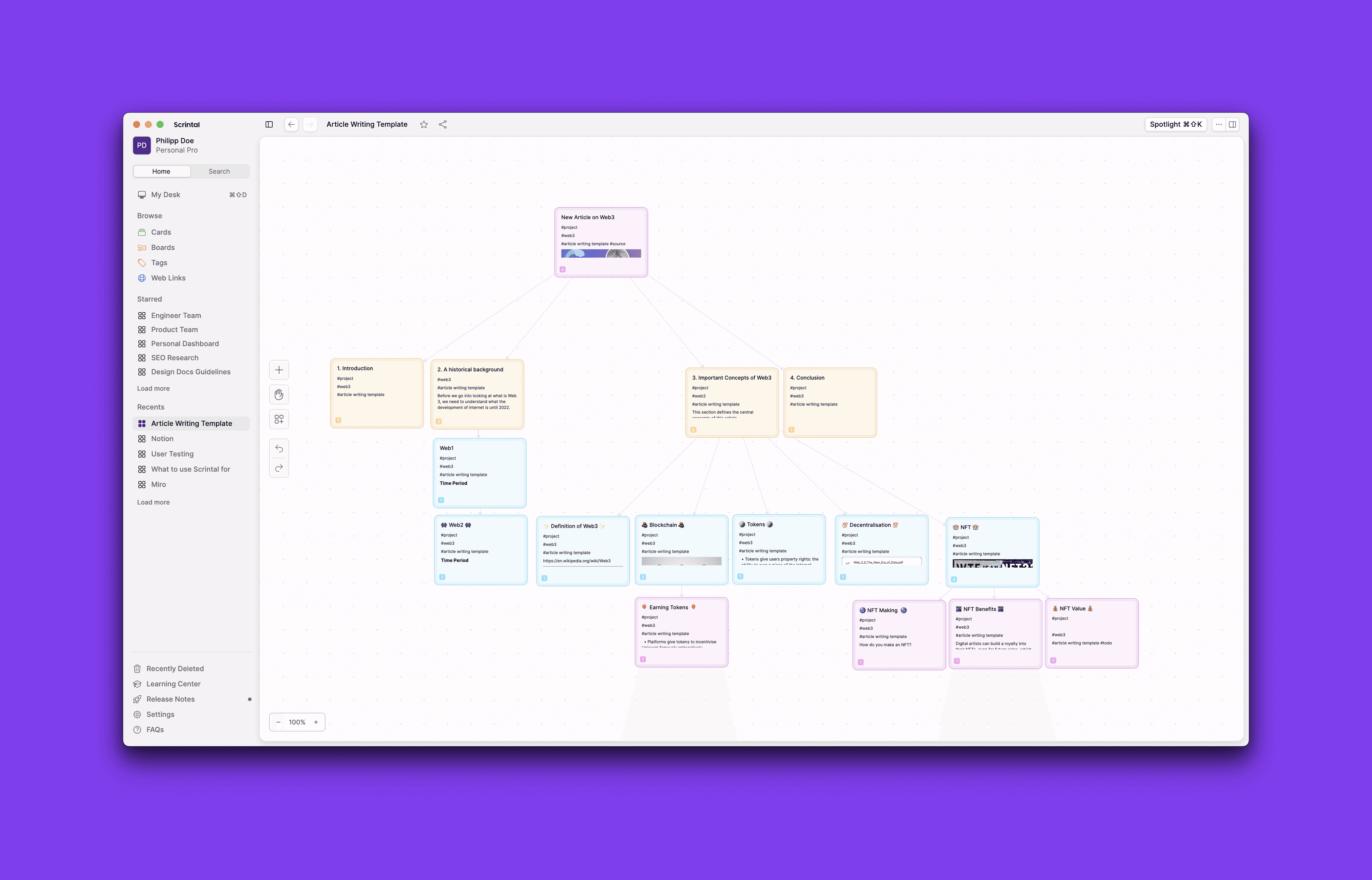
5. Add colors
In order to create a sense of grouping and hierarchy you can add colors to your cards.
This is super useful when it comes to organizing your notes or extracting key points later on in the process — especially if you're taking visual notes in class or doing something where there's a lot of information coming at you really fast! Very useful for a presentation as well — when the hierarchy matters!
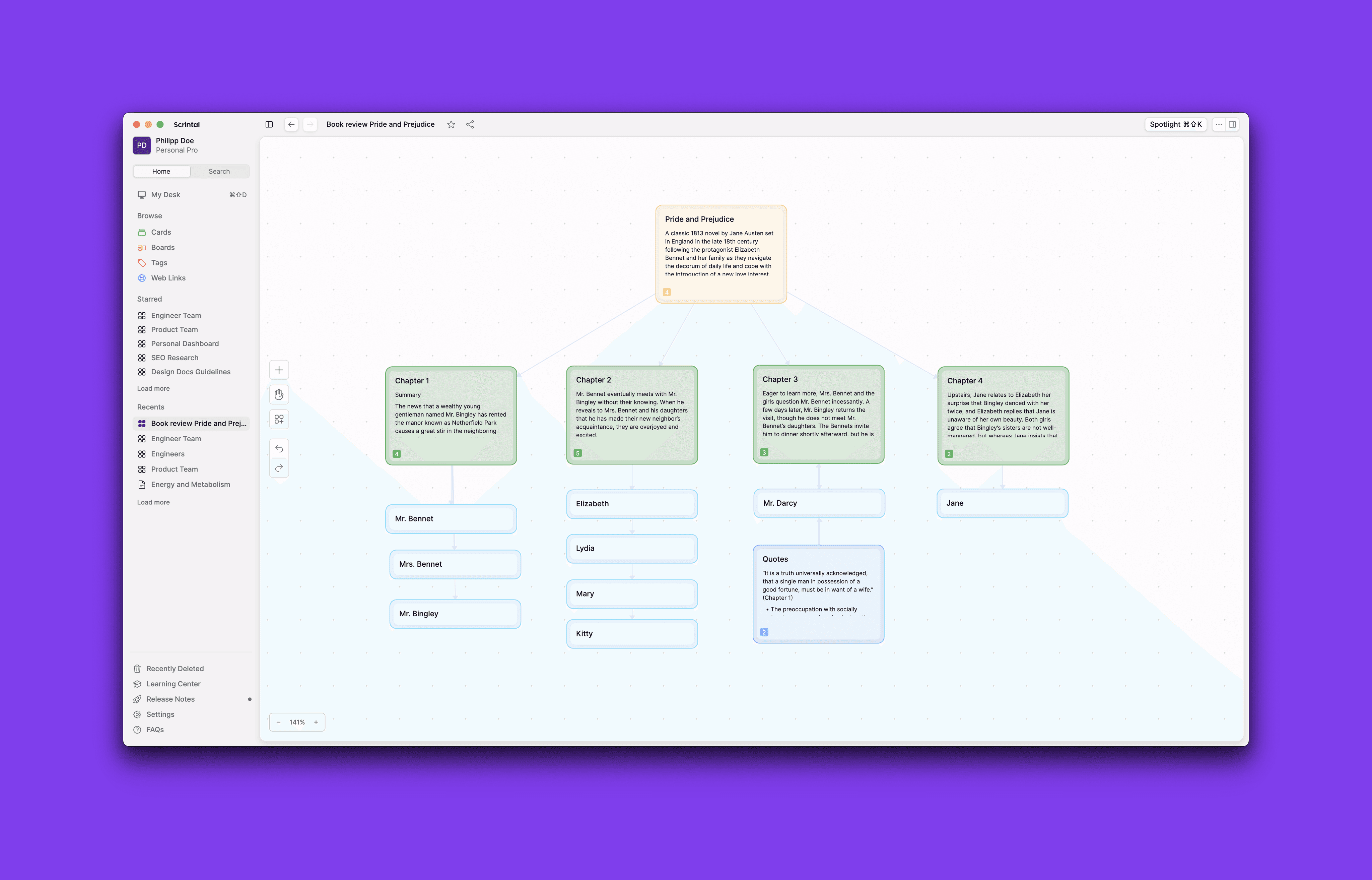
6. Organize your Cards
Finally you can organize your cards in the way that you want or makes sense to you. Here, you can freely decide on clustering and hierarchy. Think about what kind of a structure makes most sense for the topic at hand. For example, when taking notes on literature, it often helps to outline the main points, characters and relationships between them, as well as other themes in the book.
You can also choose to divide your note into sections with headings that make it easy to follow. This can be especially helpful when taking notes in seminars if you want to keep track of different speakers' statements.
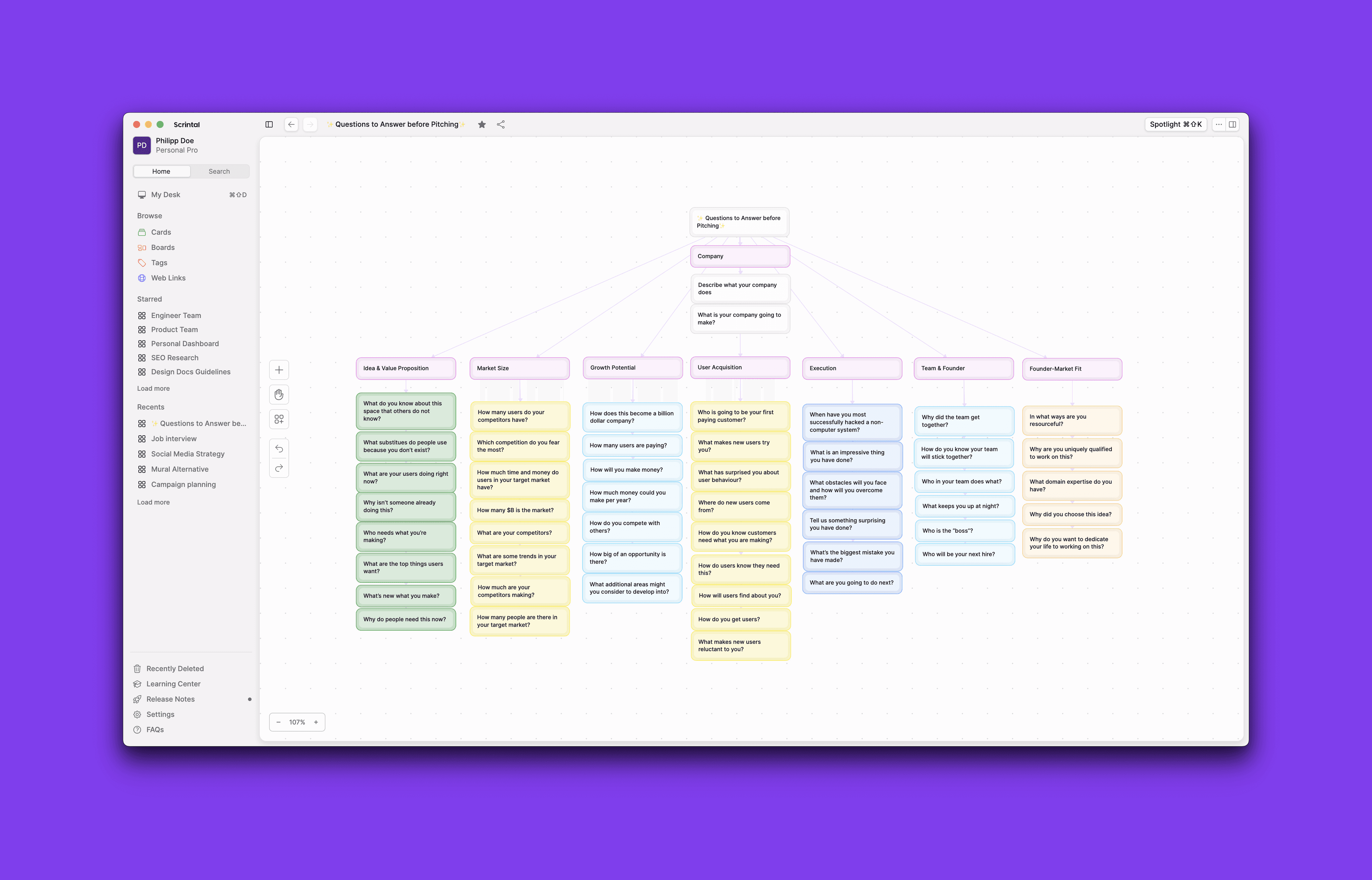
Visual Note Taking – The Scrintal Way
You can try the steps above using Scrintal! Scrintal combines the power of mind mapping with the infinite capabilities of networked note-taking. All of your thoughts in your brain, a.k.a your overstimulated personal knowledge management system, are organized and connected in one place.
Scrintal is designed for research-focused folks who want to keep their flow and concentration, to go from stressed to refreshed. A single visual tool that covers all of your note taking needs. One of the perfect way to use Scrintal is to take atomic notes using the Zettelkasten Method.
And that way, start making your visual knowledge base of interconnected thoughts and ideas. Group the similar cards by adding tags, create your web of knowledge and scale it as you grow, limitless. Zoom in and out, see how your Personal Knowledge management (PKM) base grows as you continue adding more cards with atomic notes.
Anders Sporring

